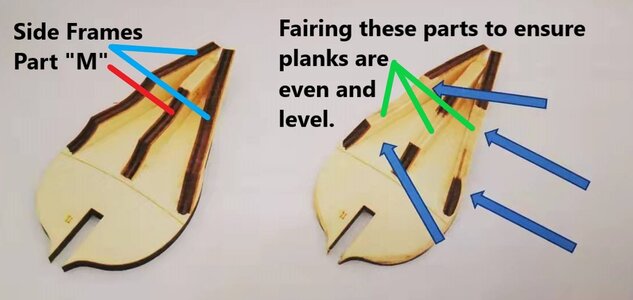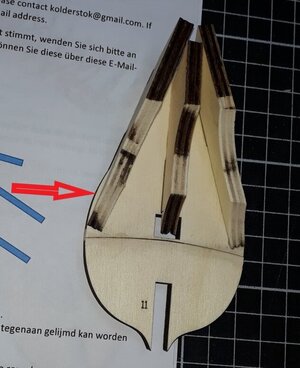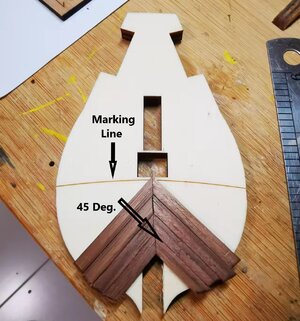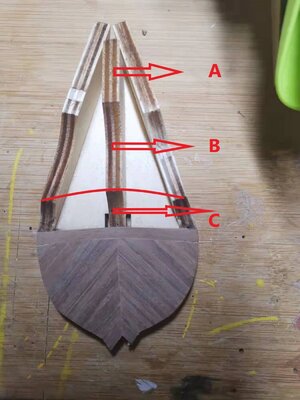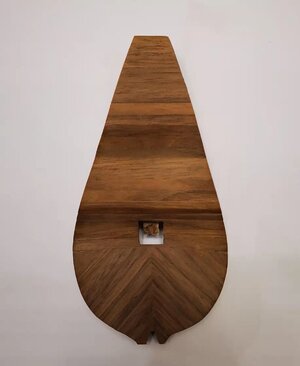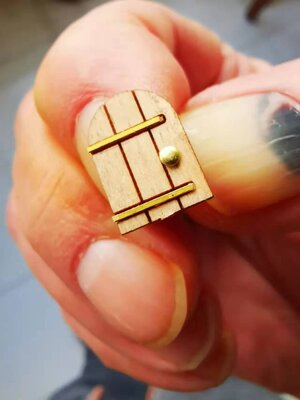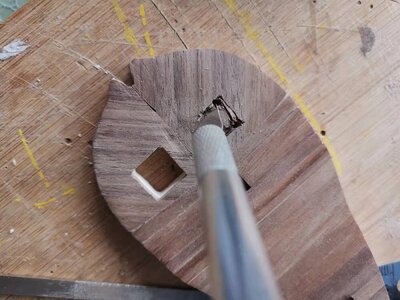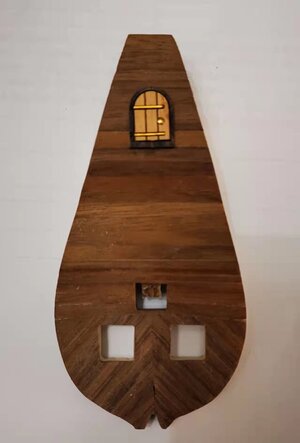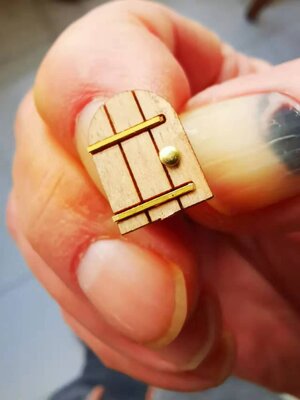Let’s get building. Now from the outset that I want to say that I actually did not intend starting the build of the WB just yet. With the Haarlem on hold for now, I thought let me go through the WB’s checklist and make sure that everything that is supposed to be there, is there. After all, I have had the kit for almost a month and have barely opened the box.
View attachment 272218
As I have come to expect from
@Kolderstok, the kit was superbly packaged.
View attachment 272219
Box design - classy and clean.
And then you know how things go – I took the keel from the clear wrapping and with that in my hand thought let me just fit one bulkhead. An hour later all the bulkheads were removed from their sheeting and dry-fitted on the keel. Then I thought, let me just see how the first deck fits into its slots and when that went in like butter, I thought I might just as well glue everything in place. Before I knew it, bulkheads 1-6 were glued to the keel and the two bow portions of the deck (there are four separate pieces that make up the deck) were glued into place.
And then I realized two things: Build log and pictures (which I had neglected to take) and maybe it wasn’t such a great idea to start gluing things into place without having checked how the whole deck fits onto all the bulkheads. Oh s*** Well, as the far the rest of the bulkheads and deck go, I need not have feared – they all went together perfectly. And about the pictures – I am fortunate that I can rely on Kolderstok’s own test build pictures and those taken by Piet Sanders.
So at this point I need to backtrack to the start and explain how things SHOULD be done.
The first step is obviously to remove all bulkheads from their sheets. They are manufactured from plywood and are 5mm thick whilst the MDF keel is also 5mm. For someone who relies heavily on pushpins during the planking process, (like me) the 5mm thick bulkheads are a blessing.
View attachment 272222
Laser cutting is beautifully clean and crisp, but because of the thickness, be prepared to put in a little effort.
Next up, I would advise the dry-fitting of the bulkheads into the keel slots and check how the deck slots align with the respective bulkheads.
View attachment 272223
Dry-fitting of bulkheads into keel slots. Photo: Kolderstok Test-Build
When seating the bulkheads into the keel, it is VERY IMPORTANT to make sure that the tops of the bulkheads are perfectly level with the top of the keel. In some cases, it may be necessary just to give the slots a slight polish with a fine file or sandpaper to make sure that the bulkheads slide all the way to the bottom and are fully seated. If there are any protrusions here, it will mean that the deck does not lie flat on the keel and bulkheads.
View attachment 272225
This, for instance, would NOT be good. Here you can see the tops of the bulkheads protrude above the top of the keel. If this is the case, get out the file and/or sandpaper. Photo:
@pietsan Piet Sanders.
View attachment 272226
This is what we want - the tops of the bulkheads and top of the keel are exactly level. Photo: Piet Sanders
View attachment 272227
When this is done correctly, we can see just how snugly the decks lie on top of the keel. Photo: Piet Sanders
If you are happy with the way that everything fits, remove all bulkheads and grab hold of Bulkhead #1. You will see that there are both an indent and notch cut into this bulkhead. Here we need to glue a 6mm walnut strip onto the REAR (non-marked side) of the bulkhead as indicated below. When this is done, it will create a "mine shaft" which will house the foremast. The semi-circled indent is for the bowsprit.
View attachment 272229
Photograph: Piet Sanders
Now we can glue all bulkheads (EXCEPT BULKHEAD #11 - the rearmost one that forms the stern) to the keel and fit the deck.
View attachment 272230
And that is what our assembly looks like at this point. Please please note that Bulkhead #11 is still dry-fit only at this stage.
View attachment 272228
In my case, I have also glued pieces of scrap plywood into the corners (between the decks and the hull) just for extra stiffness and strength. When doing this, just make sure that you leave the hole for the main mast open (marked with the red line).
And that my dear friends brings an end to proceedings for the day. Thank you all for following and for all the wonderful comments and participation that I have received until now. Until next time, please look after yourselves, take care and enjoy your building!
Heinrich




